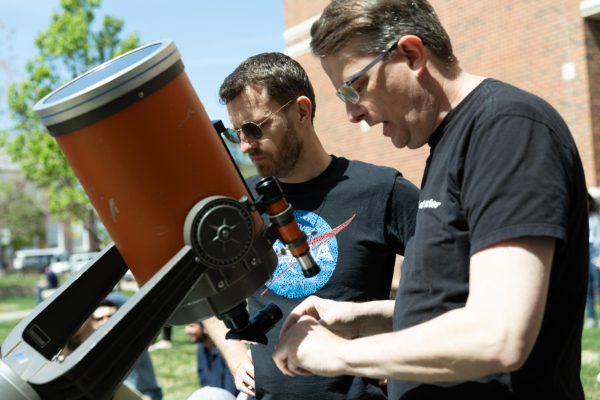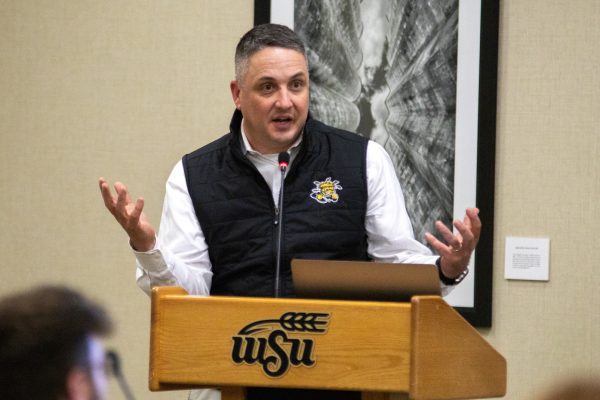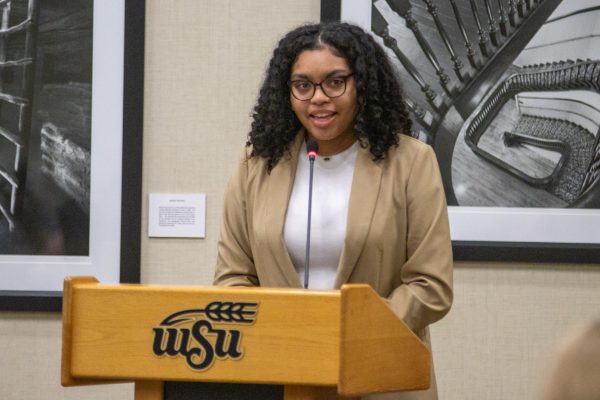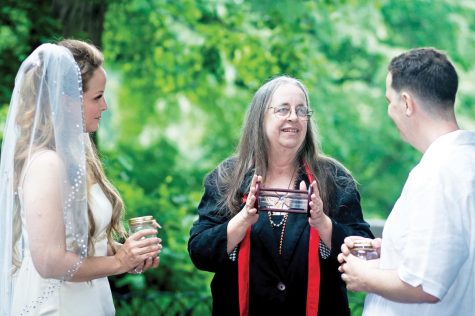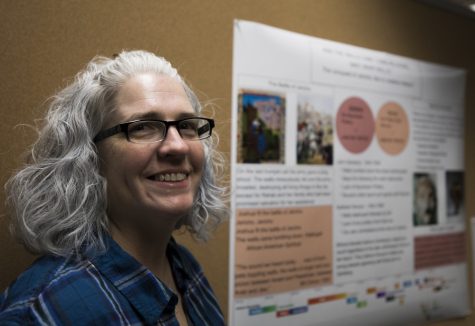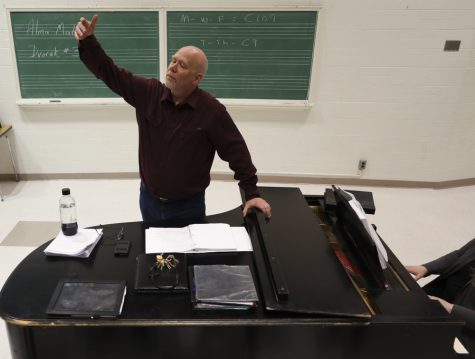Gordon Parks photograph exhibit opens at Ulrich Museum
Photographer and artist Gordon Parks was known for his visual representations that challenged the meaning of America and the segregated society of the ’40s.
Through 177 works obtained by Wichita State, the Ulrich Museum of Art opened its winter exhibition “Visual Justice: Gordon Parks’ American Photographs.”
The museum hosted an opening reception Friday night, and at least 100 people attended.
Parks created pieces that helped progress the Civil Rights Movement. He was featured in Life Magazine for creating powerful imagery of what segregation was truly like.
“Although my opinion is extremely biased, I believe that Gordon Parks is one of the world’s most creative geniuses,” said Ted Ayers, a lead negotiator for gaining the Parks collection. “As Kansans, we should be proud that he is from here.”
With the opening reception having a record number of people in the galleries, the new exhibition has drawn in a lot of attention and collaborations for the Ulrich. Professor John Edwin Mason from the University of Virginia will visit the Ulrich at 6 p.m. Feb. 12 to discuss the works of Gordon Parks. Along with Mason’s discussion, the Wichita Art Museum will also host an event starting at 2 p.m. Feb. 13 discussing the Civil Rights Movement as a whole, Wichita’s part in the movement and Parks’s work.
Artist Jennifer Perry, who is currently doing work in the Flint Hills, came to the Ulrich strictly because she heard of the opening reception.
“When I heard that there was going to be a Gordon Parks gallery in Wichita, I knew it would be worth the drive to town just to see his amazing work,” Perry said. “I feel proud of Wichita for showing an exhibit like this. It shows the true importance of photography and the involvement it had in American history.”
Along with people outside of the area and members of the community, many high school students were at the event. Andres Leland, along with other students, were invited by the director of Sunflower Community Action—a local non-profit organization—to view the exhibit.
“I’ve always been interested in seeing artwork about community justice and the power that you can see in photographs,” Leland said. “It is one of the best experiences you can have to connect with people over such a prominent topic in our history.”
The collection started with four pieces in 1999, which Ayers helped acquire. Through the work of Ayers and three other curators, the collection has officially grown to 177 photographs and documents from Parks.
“The collection has been a wonderful supplement for Wichita State because Parks is able to show such vast contrasts with his different style of works,” Ayers said. “As a photographer, journalist and artist, the community is able to gain more insight on not only civil rights, but on Parks himself.”

Marissa Campbell was the Culture Editor for The Sunflower. Campbell wrote music reviews as well as arts, culture and other entertainment stories. From...








